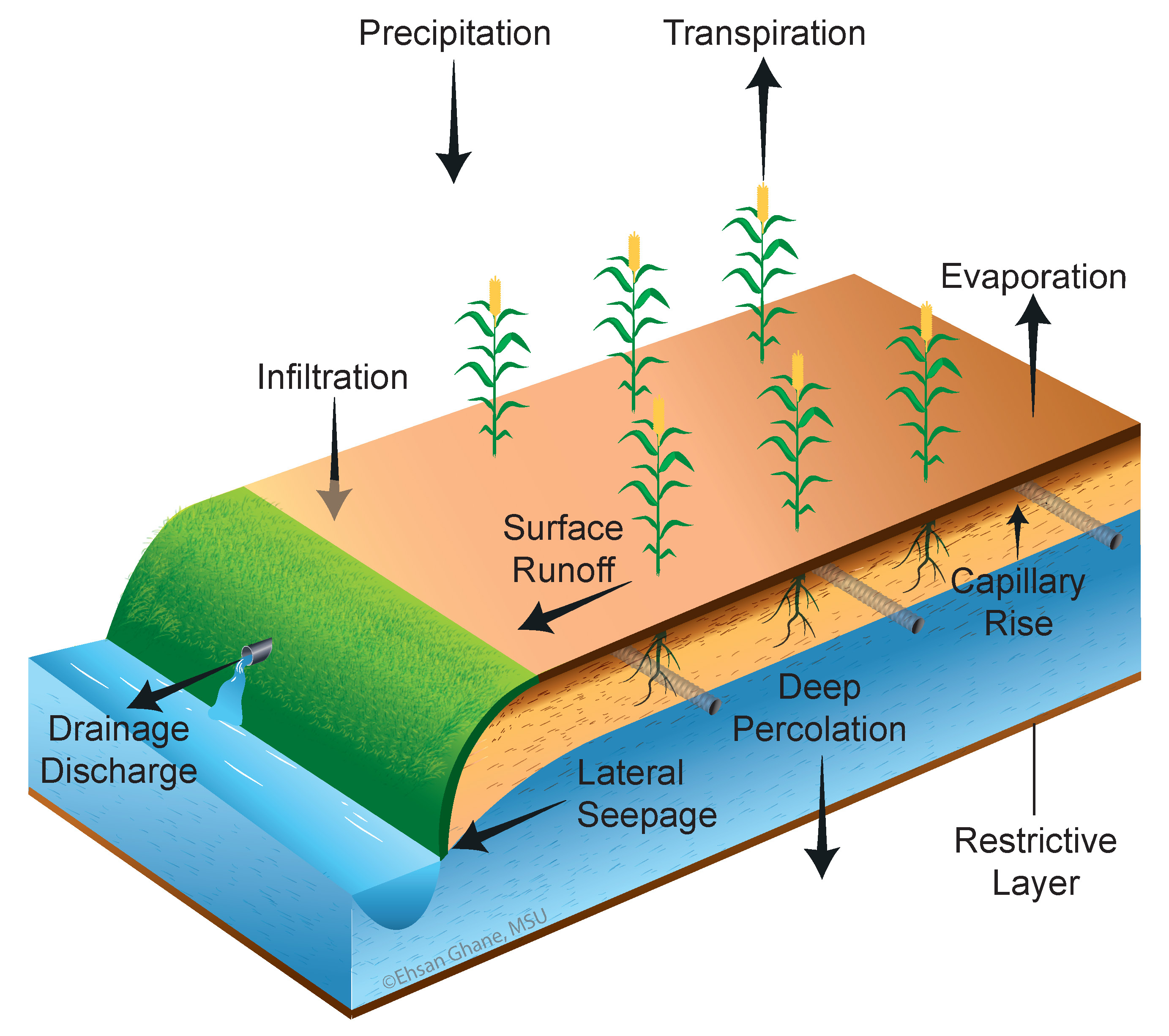Drainage Water Components
For the pdf version of this bulletin, click here.
6. Drainage Water Components at a Subsurface-Drained Farm
To better understand subsurface drainage, we need to understand the water cycle components at the field scale (Figure 8). The water cycle components in a field with subsurface drainage are composed of precipitation, evaporation, transpiration, infiltration, surface runoff, lateral seepage, deep percolation, capillary rise, storage (on the surface and within the profile) and drainage discharge.
Precipitation is the primary source of water for crop use. As precipitation falls on the soil and crops, some of it evaporates and some of it infiltrates the soil to build a water table in the soil profile. Some of the water is held in the soil as soil water storage. The water in the soil profile can pass through the restrictive layer slowly in the process of deep percolation. Water can rise above the water table in the process of capillary rise that provides water for plant roots above the water table. Plants uptake water and release it in the process of transpiration. The combination of evaporation and transpiration is called evapotranspiration. When precipitation rate exceeds the infiltration capacity of the soil, water starts to accumulate on the surface, and with a sloping field, surface runoff will be generated.
Water in the soil profile moves toward the ditch through lateral seepage. The subsurface drainage system moves water from the soil profile to the drainage ditch or receiving stream.
The water balance in the drainage system is described as
Drainage discharge = Precipitation - Evapotranspiration - Surface runoff - Lateral seepage - Deep percolation - Soil water storage




 Print
Print Email
Email